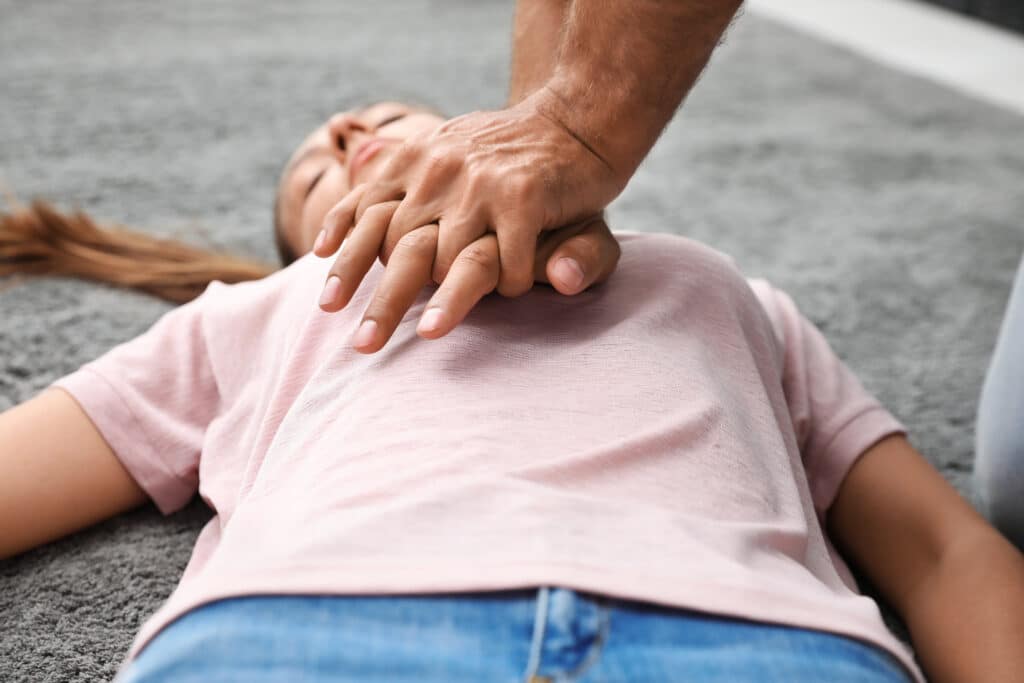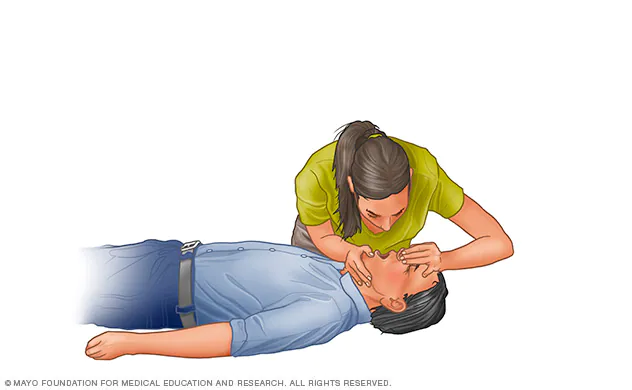When someone’s in trouble and their breathing or heartbeat stops, knowing how to do CPR can be a real lifesaver. Let’s break down how to do CPR in a way that’s easy to understand, so you can be ready to step in and help when it matters most.

What is CPR:
Cardiopulmonary resuscitation (CPR) is a lifesaving technique that’s useful in many emergencies in which someone’s breathing or heartbeat has stopped.
Defined by Mayo clinic
CPR is a way to help someone whose breathing or heart has stopped. It involves pressing on their chest and giving them breaths to keep oxygen moving in their body until professional help arrives.


Step-by-Step Guide on How to Perform CPR and Save Lives During Emergencies:
- Check the Scene: First, make sure it’s safe for you and the person. Tap their shoulder and ask loudly, “Are you okay?” to see if they respond.
- Call for Help: If they’re not responding and not breathing normally, call for an ambulance right away or get someone nearby to do it.
- Get Them Ready: Lay the person on their back on a hard surface. Tilt their head back a bit to open their airway.
- Do Chest Compressions:
- Put one hand in the middle of their chest, then put your other hand on top.
- Push down firmly at least 2 inches (5 centimeters) at a steady pace of about 100 to 120 pushes per minute. Let their chest come all the way back up between pushes.
- Give Them Breaths:
- After 30 chest pushes, give two breaths. Make sure their airway is open by tilting their head back and lifting their chin.
- Pinch their nose closed and cover their mouth with yours to make a seal.
- Give two breaths, each lasting about one second, and watch to see if their chest rises.
- Keep Going: Repeat the cycle of 30 chest pushes and two breaths until help arrives or the person starts breathing again.
Remember These Points:
- Stay Calm: Keep your cool in an emergency. Remember what you’ve learned and focus on helping.
- Act Quickly: If you’re not sure if CPR is needed, it’s better to start right away than to wait.
- Use What’s Available: If there’s an AED around (those machines that shock the heart), follow its instructions along with doing CPR.
- Consider Learning More: While anyone can do CPR, taking a class can give you more confidence and skills to help out in emergencies.
Why CPR Matters:
Saving a life isn’t just about following steps—it’s about caring and being ready to act fast when someone needs help. Learning CPR means you can be that person who steps up and makes a real difference in someone’s life when they need it most.
So take the time to learn CPR. You never know when you might be the one who saves a life.
Read also:
- Anambra Task Force Retrieves 9 Home-Made Bombs and 4 Walkie Talkies from Gunmen
- Exciting UCL Action: Real Madrid and Man City Play Out Thrilling Draw, Arsenal’s Trossard Rescues Point
- Fire Destroys 14 Lagos market buildings, four structures collapse
- Embracing Life’s Unexpected Turns: Mabel Makun’s Journey Through Marriage (AY)
- Sharon Ooja Responds to Trolls who said she married another person’s husband
- Umahi Educates Atiku on Coastal Road Project Costs: Says you don’t know figures
- Ensuring Transparency: Nigerian Government Introduces Mobile App for Citizen to track Government Operations
- Insight from a Nigerian Pastor on Marrying Three Wives with Wife’s Approval and Reasoning
- Solar Eclipse 2024: Time, Duration, and What You Need to Know
- Nigerians Celebrate as Nigeria Police Excel in U.S. Training Program in Jordan
- Sultan’s Urges Muslims to Seek Shawwal Moon on Monday Ahead of Eid-el-Fitr


![Man Receives Pig Kidney Transplant and Leaves Hospital in good condition 5 Rick Slayman, the first man to get a kidney transplant from a pig and his doctors [cnn]](https://loadedvibesng.com/sitsyghu/2024/04/Man-who-got-new-kidney-from-a-pig-released-from-hospital.avif)
